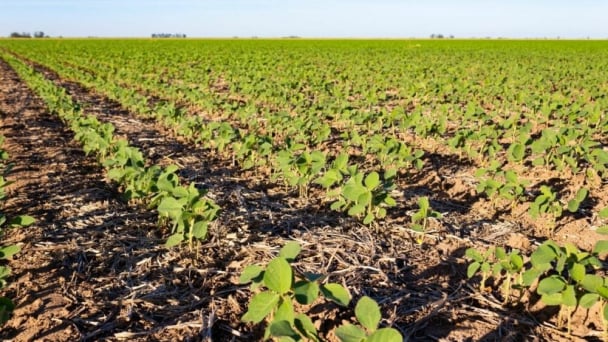May 15, 2025 | 01:17 GMT +7
May 15, 2025 | 01:17 GMT +7
Hotline: 0913.378.918
May 15, 2025 | 01:17 GMT +7
Hotline: 0913.378.918
The vast majority of health problems encountered in modern poultry operations are of enteric nature. Historically, an important component of interventions related to gut health was based on antibiotics and coccidiostats, which are not allowed under antibiotic-free production. Recent studies highlight a crucial finding: reducing microbial loads in poultry feed helps common enteric health issues such as Necrotic enteritis and significantly boosts poultry performance.
A bird’s GIT is responsible for the absorption of nutrients used in vital physiological functions that promote homeostasis and growth. Enteric diseases lead the intestinal lining to switch from absorption to defence mode, producing inflammation and impairing the poultry gastrointestinal tract’s normal ability to absorb essential nutrients, adversely affecting bird health, performance and productivity. Feed sanitation has been evidenced as an impactful way to control microbial loads and mitigate pathogen prevalence.
Reducing feed microbial loads supports gut health
When the poultry GIT is balanced beneficial bacteria outcompete pathogens for resources, preventing pathogen colonisation through competitive exclusion. However, in stressful conditions or younger birds, these beneficial bacteria may not be well-established, creating the opportunity for abnormal proliferation of undesirable bacteria that preclude dysbiosis making them vulnerable to intestinal disease. Additionally, microbiome analysis in the various segments of the bird’s intestine has revealed that birds consuming sanitised feed develop a different microbiome makeup from those consuming untreated feed. leading to the question: can controlling feed microbial loads truly impact gut health and performance in a meaningful way?
Research conducted by Colorado Quality Research indicates that using a feed sanitiser during their first two weeks of life helped decrease the negative impact of Necrotic enteritis (NE), as evidenced by lower NE-specific lesion scores, reduced shedding of oocysts, improved performance metrics, and lower mortality rates. Further demonstrating the importance of controlling microbial loads and minimising pathogen exposure during early stages of broiler development to safeguard long-term health, growth and performance.
Furthermore, field trials have shown that feed sanitation, especially during the first 21 days, effectively reduces feed microbial loads, improves feed conversion (FCR) and positively impacts bird body weight (BW), generating positive returns on investment. Thus, making feed sanitation an effective strategy to support gut health, poultry performance and producer profitability.
Similar benefits have been observed in broiler breeders. For example, a study by Avila et al. (2023) conducted at the University of Georgia found that hens fed sanitised feed produced cleaner eggs with lower eggshell contamination leading to a significantly higher percentage of “Grade A” chicks.
Feed sanitation supports poultry performance
Feed sanitation has historically been used to address pathogens associated with food safety concerns, such as Salmonella, in finished feeds and high-risk raw materials. More recently, it has been evidenced that feed sanitation provides additional benefits, with a measurable impact on performance. This new evidence suggests that reducing microbial loads in feed is crucial for maintaining gut health and optimising performance in poultry production. Implementing a cost-effective and impactful feed pathogen control program requires a comprehensive understanding of the specific risks associated with feed formulations and the use of the right chemistry for each case. This knowledge allows the poultry industry to tailor strategies such as feed sanitisers and organic acid blends to address microbial challenges effectively.
Anitox has developed a specialised feed pathogen control portfolio aimed at reducing microbial contamination in raw materials and finished feeds, minimising the transmission of pathogens through feed. Feed sanitisers, Termin-8 and Finio, offer high-level, long-term, broad-spectrum control over feed-source pathogens to ensure that feed remains clean until the point of consumption. Additionally, Fortrol, an organic acid product, controls Salmonella in both feed ingredients and finished feeds and gives feed producers flexibility in addressing microbial challenges encountered during feed processing.
(Poultryworld)

(VAN) Fourth most important food crop in peril as Latin America and Caribbean suffer from slow-onset climate disaster.

(VAN) Shifting market dynamics and the noise around new legislation has propelled Trouw Nutrition’s research around early life nutrition in poultry. Today, it continues to be a key area of research.

(VAN) India is concerned about its food security and the livelihoods of its farmers if more US food imports are allowed.

(VAN) FAO's Director-General emphasises the need to work together to transform agrifood systems.

(VAN) Europe is facing its worst outbreak of foot-and-mouth since the start of the century.

(VAN) The central authorities, in early April, released a 10-year plan for rural vitalization.

(VAN) Viterra marked a significant milestone in its carbon measurement program in Argentina, called Ígaris, reaching 1 million soybean hectares measured.